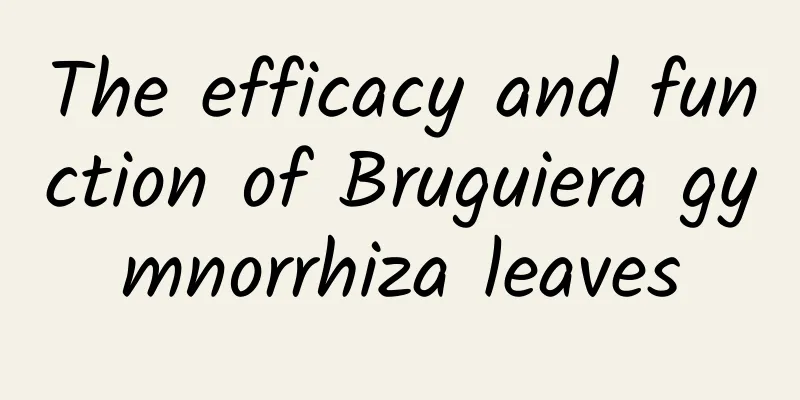The efficacy and function of single-leg orange

|
As for monocot, I think some people may have heard of it or even taken it. It doesn’t matter if you haven’t heard of it. Next, I will introduce the single-legged orange to you. 【Alias】 Dry grass (Flora of Guangzhou), one-legged monkey (Nanning Pharmacopoeia), horsetail chrysanthemum (Guangxi Chinese Materia Medica), golden key (Southern Fujian Folk Herbs), ground lotus (Guizhou Plant Medicinal Survey), deer grass (Guangdong Chinese Medicine II), and huanghuagan (Guangdong Chinese Medicine). [Original form] Annual herb, 8 to 15 cm high. Stem erect, rough or hairy, solitary or slightly branched. The upper leaves are alternate and linear; the lower leaves are opposite, linear or lanceolate, about 1 cm long or shorter, rarely with missing teeth, and sometimes degenerated into scales. The flowers are yellow, red or white in terminal spikes, sparse at the bottom and closer at the top, and sessile; the bracts are usually longer than the calyx; the calyx is tubular, 5-lobed, and usually has 10 ridges; the corolla tube is slender, about 8 mm long, curved near the apex, lip-shaped, with 2-lobed upper lip and 3-lobed lower lip, the upper lip is shorter than the lower lip; there are 4 stamens, hidden inside, and 1 anther chamber; there is 1 pistil, the style is slender, and the apex is rod-shaped. The capsule is nearly spherical or oblong, loculicidal, and contains many seeds. Flowering period is July. The fruiting period is from August to September. 【Habitat distribution】 It grows in grasslands on plains and hills, and often parasitizes on the roots of other plants. Distributed in Guangdong, Guangxi, Guizhou, Fujian and other places. Produced in Guangdong, Guangxi and other places. 【Properties】 The whole dried herb is yellowish brown or greenish brown in color, with thin stems covered with grayish white rough hairs. Leaves are linear or lanceolate, most falling off. Above the middle part are sparse spike inflorescences. Except for a few fruitless plants with dry corollas visible, most of the others have fallen off. The calyx is tubular, the capsule is dark brown and hidden in the calyx tube, the style remains, and the seeds are small and yellow-brown. The best plants are those that are complete, green in color, and free of mud, sand or impurities. 【Chemical composition】 Contains amino acids, organic acids and phenols. 【Nature and flavor】 Sweet, mild and neutral. 【Function and indications】 Clears the liver, strengthens the spleen, helps digestion, and kills insects. Treats food poisoning, malnutrition, jaundice, and night blindness in children. 【Usage and Dosage】 For internal use: decoction. 【Source】 From "Essentials of the Nature of Raw Herbs" The above is a detailed introduction to the single-legged orange. Since it is a traditional Chinese medicinal material, we can eat it with confidence. The single-legged orange has a very good effect on improving all aspects of the human body. |
<<: The efficacy and function of big head tea
>>: The efficacy and function of Gu Mu
Recommend
It hurts, it hurts, I can't stop tearing my barbs! It's not because of vitamin deficiency, but because of this habit...
Expert of this article: Zhou Xiaobo, Doctor of Me...
The efficacy and function of Clematis chinensis
Friends who don’t know Cotton Clematis will not u...
When cleaning before the end of the year, be careful not to use the wrong disinfectant, which may cause a "big accident"!
Expert of this article: Chu Yuhao, PhD of Beijing...
What are the benefits of drinking dandelion water?
Nowadays, people pay more and more attention to h...
Zhejiang's Most Scientific | Who says fiber can only be used to make clothes? It can also be used to make bicycles and airplanes!
Do you know how clothes are made? What magical fu...
A herbal medicine for kidney disease
For men, hearing that they have kidney disease wi...
What is the medicinal value of purple quartz
Amethyst is a material similar to glass. This sub...
The more you walk, the lower your risk of death?
Insufficient physical activity affects more than ...
AI football coach qualified? Drawing tactics is better than human coaches! It can also "master" other sports
Football is the most popular, most accepted and m...
A black hole may have passed through Earth, but we just haven't seen it yet
Do you think black holes are far away from our li...
“New research: Milk causes cancer and heart disease”? Don’t believe it!
Rumor: "Drinking milk regularly will increas...
The orange peel I bought turned blue. Is it moldy? Can I still eat it?
Wogan is a citrus fruit that everyone likes. Its ...
The efficacy and function of Gaolu
As people's research on traditional Chinese m...
How to treat lupus erythema with traditional Chinese medicine
The problem of lupus erythema that many people ha...
"Fragmented sleep" has become a hot topic, and doctors remind you: sleeping may be the same as not sleeping
How's your sleep? In recent days, there have ...









